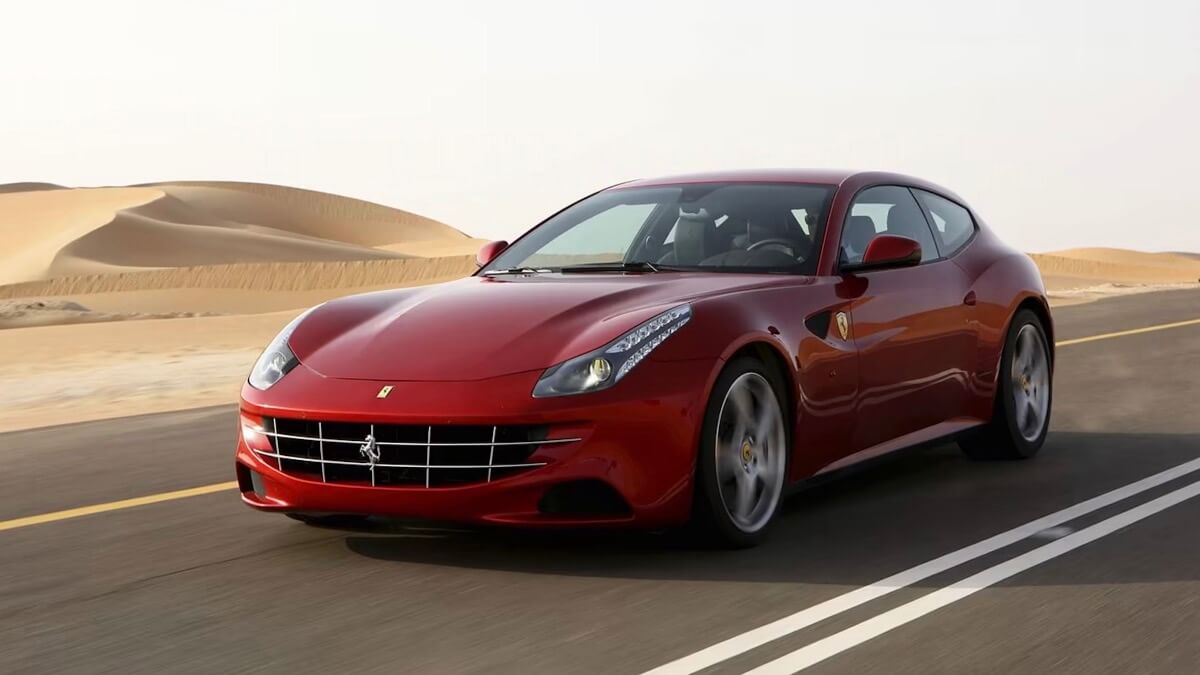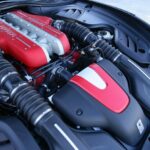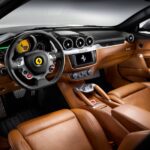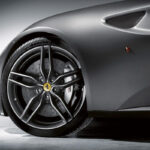When you think of modern Ferrari, what comes to mind? Perhaps it’s the 458 Italia, a solid mid-engined supercar, or the LaFerrari, a hybrid successor to the Enzo hypercar. Pretty sure you wouldn’t wander far off from a red-colored exotic sports car that’s shaped and goes like a racer. But there’s one Ferrari that’s a bit different from the rest, and it’s called the FF.
Back in 2011, Ferrari decided to try something new. It made the FF, not just a super-fast car but also one you could actually use every day. It looks a bit unusual as it’s kind of like a sporty family car with a hatchback—meaning it has a big back door that opens up to a lot of space for bags or groceries. It also has enough room to fit four people comfortably. But don’t let that fool you; it still has a powerful V12 engine under the hood, making it as fast as you’d expect a Ferrari to be.
The FF sounds like a really tasty all-in-one package, but strangely, it has lost much of its original value over the years. It cost around $300,000 when it was new, but now you can find it for as low as $80,000. This price drop isn’t because it’s not a good car. In fact, it’s an amazing chance for more people to own a Ferrari without paying top dollar.
In this article, we’ll be taking a closer look at the Ferrari FF and get into the nitty-gritty of what makes it a bargain ‘true’ Ferrari. We’ll see how it blends the supercar element with the convenience of a daily driver. Whether you’re a fan of the brand or just love cars in general, the FF has a story worth knowing.
Here’s why the Ferrari FF, the most budget-friendly modern Ferrari you can buy, is actually an incredible deal. Let’s go!
The Beginning
The year was 2011, and Ferrari wanted to make a car that wasn’t just super fast or just looked cool but was also practical enough for everyday stuff. That’s how the Ferrari FF was born. FF stands for “Ferrari Four,” because it was the first time Ferrari made a car with four seats and a four-wheel drive system.

The FF isn’t like most Ferraris you might think of. Instead of just being a low, sleek sports car, it looks a bit more like a family hatchback but way faster and fancier. This was Ferrari’s way of making a car you could take on adventures, not just to the racetrack. It has a special design called “shooting brake,” which is basically a fancy term for a sporty car that has a big back door and lots of room inside.
At the heart of this car is a really powerful engine. It’s got a huge 6.3-liter V12 engine that makes it go from 0 to 60 mph in just 3.7 seconds! Top speed? A solid 208 mph. But what’s really cool about the FF is how it handles the road. Ferrari developed a smart way to make the car drive even better with the 4RM system. It’s the brand’s first shot at making a car with an all-wheel-drive system — a sophisticated one, which we’ll get onto in a sec.
With the FF, Ferrari wanted to show the world a sports car could be practical too. Ultimately, the FF was all about breaking the rules and trying new things for the Italian marque.
Design and Practicality
In terms of the design, Ferrari really thought outside the box with the FF. It keeps that classic Ferrari look – sharp and ready to zoom off – but adds something new with a bigger back end. This means there’s more room inside, both for people and all sorts of stuff you might need to carry. It’s like it has stretched a Ferrari into something you can use for a weekend trip or a big grocery haul.
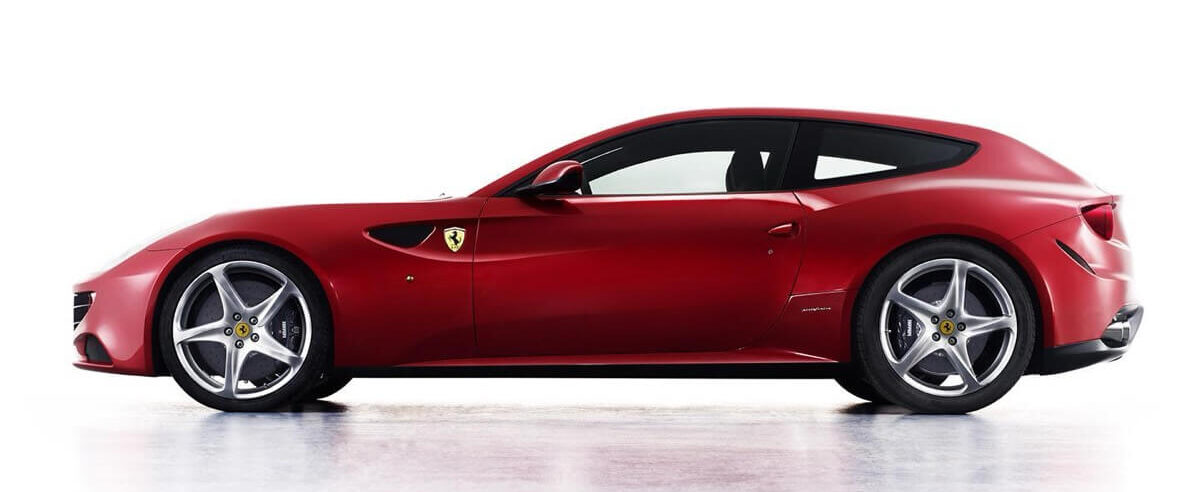
Inside the FF, it’s all about making everyone feel special. It’s got space for four people to sit comfortably, which is rare for a car that can challenge any supercar at that time. And we’re not talking about tiny, cramped seats in the back. These are real, full-sized seats where grown-ups can sit without feeling squished. Also, the inside of the FF is packed with fancy features and top-notch materials, making every drive feel like a luxury trip.
One of the best things about the FF is that it’s not just a fair-weather friend. Thanks to its clever four-wheel drive system, it can handle all sorts of roads and weather. Rainy days, snowy streets, or a bit of off-road – the FF is ready for it.
Indeed, the Ferrari FF shakes up what we expect from a sports car. It’s as thrilling to drive as any Ferrari but also practical enough for everyday stuff.
The Magic Behind the 4RM System
Now, let’s talk about that 4RM system. This is Ferrari’s fancy way of saying it has a special kind of four-wheel drive, but it’s not like the kind you might find in other cars. This system is lighter and smarter, making the FF both fun to drive and practical for different situations.
Here’s how it works in simple terms: Alongside the big V12 engine that powers the back wheels, there’s another, smaller gearbox just for the front wheels. This is pretty unusual because it means the FF can use both the front and back wheels to move, but it does this very smartly.

The front gearbox gets a little bit of power from the engine – up to 20% of what the engine can make. It grabs this power through a special gear connected right at the front of the engine. This setup is different because it has two speeds for going forward and one for going backward, which works together with the main gearbox that controls the back wheels.
Now, you might wonder how a two-speed gearbox at the front can work well with a seven-speed gearbox at the back. Ferrari thought this through. The first gear at the front works with the first and second gears at the back, and the second gear at the front matches up with the third and fourth gears at the back. The FF doesn’t use this front-wheel power after fourth gear, but that’s okay because the car is designed to handle well with just the back wheels in higher gears — but that does mean the car becomes rear-wheel-drive once you hit the fifth gear and above.
To manage all this, the FF uses some advanced tech to control how power is sent to each front wheel, ensuring the car stays stable and goes exactly where you want it to. This setup also helps when cornering by adjusting the power to each wheel as needed. Better yet, this extra tech is surprisingly light, adding less than 90 pounds to the car’s weight — about half of what similar systems in other cars might add.
Thus, the 4RM system is about making the FF easier to drive in all sorts of weather, making sure you can go places without worry. Plus, it can make the car faster in a race, especially when starting from a stop. Who wouldn’t love that in a Ferrari?
The Performance on the Market
When the Ferrari FF debuted, it broke the mold with a sticker price of around $300,000, positioning it among the elite in luxury sports cars. Yet, despite its groundbreaking features and versatility, the FF encountered an unexpected twist in its market journey, leading to significant depreciation. Today, enthusiasts can discover FF models in the used market for around $80,000 to $130,000, contrasting their original asking price. This depreciation phenomenon opens up an opportunity to own a Ferrari at a considerably lower entry point.

The reasons behind the FF’s depreciation are multifaceted. Primarily, it’s the niche appeal of the FF—a luxury sports car with practical elements like four-wheel drive and more cabin space, targeting a smaller market segment. Traditionally, Ferrari enthusiasts have sought models emphasizing performance and exclusivity over practicality. The FF’s deviation from this formula, combined with its initial high cost and the natural depreciation of luxury vehicles, contributed to its price drop. Additionally, concerns over higher maintenance costs associated with the innovative but complex 4RM system may have influenced buyer caution in the secondary market.
That said, the FF is now an attractive proposition in the used luxury car market. It’s not merely about accessing a lower-priced Ferrari but about the value offered. The depreciation has little to do with the car’s performance or luxury appeal, which remains top-notch. Buyers in the used market are getting a car with a powerful V12 engine, advanced AWD system, and a spacious, luxurious interior uncommon in the sports car category. Such a great combo is now available at a fraction of the original price, making the FF an enticing choice for those looking to enter Ferrari ownership.
Maintenance Considerations: The Cost of Owning a Ferrari FF
At this point, I could sense some of you are already seeking listings for used FFs. But before you make that call, you must acknowledge the darker side of the coin here.
While it’s in many ways a nice piece of automotive gem, owning a Ferrari FF requires commitment, especially financially. With its advanced mechanics and luxury pedigree, the FF demands attention to detail and deep pockets for upkeep. Here’s a breakdown of what maintaining this V12 beauty might cost you:
Servicing the 4RM System
The FF’s 4RM system is advanced, offering unmatched control and performance. However, should this system require repairs or maintenance, owners might find themselves facing bills that can range from a few thousand dollars for minor issues to tens of thousands if major repairs are needed. Precision engineering requires precision care, which comes at a premium.

V12 Engine Upkeep
The 6.3-liter V12 engine is a powerhouse that needs regular maintenance to keep it purring. Routine service such as oil changes, which should occur at least annually or per 10,000 miles, could cost upwards of $1,000. For more comprehensive engine maintenance, including spark plugs, timing belts, and fluid changes, owners can expect costs to exceed $3,000 or more, depending on the service extent.
Brake System Maintenance
Equipped with high-performance brakes, often carbon-ceramic, the FF ensures stopping power that matches its accelerative force. Replacing these brakes, however, can be a significant expense, with costs easily reaching $5,000-$10,000 for a full set of pads and rotors. This figure varies based on usage and driving conditions but is a critical maintenance aspect for safety and performance.
Electronics and System Updates
The FF’s cabin and performance systems are laden with sophisticated electronics that require regular updates and occasional repairs. Faults within the infotainment system or electronic suspension components can lead to repair costs of $2,000-$5,000, depending on the complexity of the issue and the parts involved.
Tire Replacement
Performance tires for the FF, designed to handle its power and provide grip across conditions, wear faster than those on more conventional vehicles. A set of high-quality performance tires can cost between $1,500 and $2,500, with a recommendation to replace them every 15,000 to 20,000 miles or as wear and tear dictate.
Insurance and Depreciation
Insuring a Ferrari FF is another consideration, with annual premiums often exceeding $5,000 or more, influenced by driving records, locations, and coverage levels. While insurance is a necessity, it also reflects the FF’s value and the cost to repair or replace parts of such a high-performance vehicle.
In short, prospective and current owners should budget for annual maintenance costs of at least $5,000 to $10,000, excluding any unexpected repairs or replacements. It’s the price of owning a piece of a rare breed Ferrari, ensuring it continues to deliver the thrilling driving experience it was designed for.
Still a Compelling Used Buy
However, even with its high maintenance and repair costs, the Ferrari FF remains an attractive option for those looking to dive into the Ferrari world, especially as a used buy. The depreciation of the FF is really like a double-edged sword; while it might have been a bitter pill for its first owners, it’s a blessing in disguise for those eyeing a Ferrari badge without the brand-new price tag. Now, with prices significantly lower than its original sticker, the FF represents an opportunity to own a V12 Ferrari at a bargain.
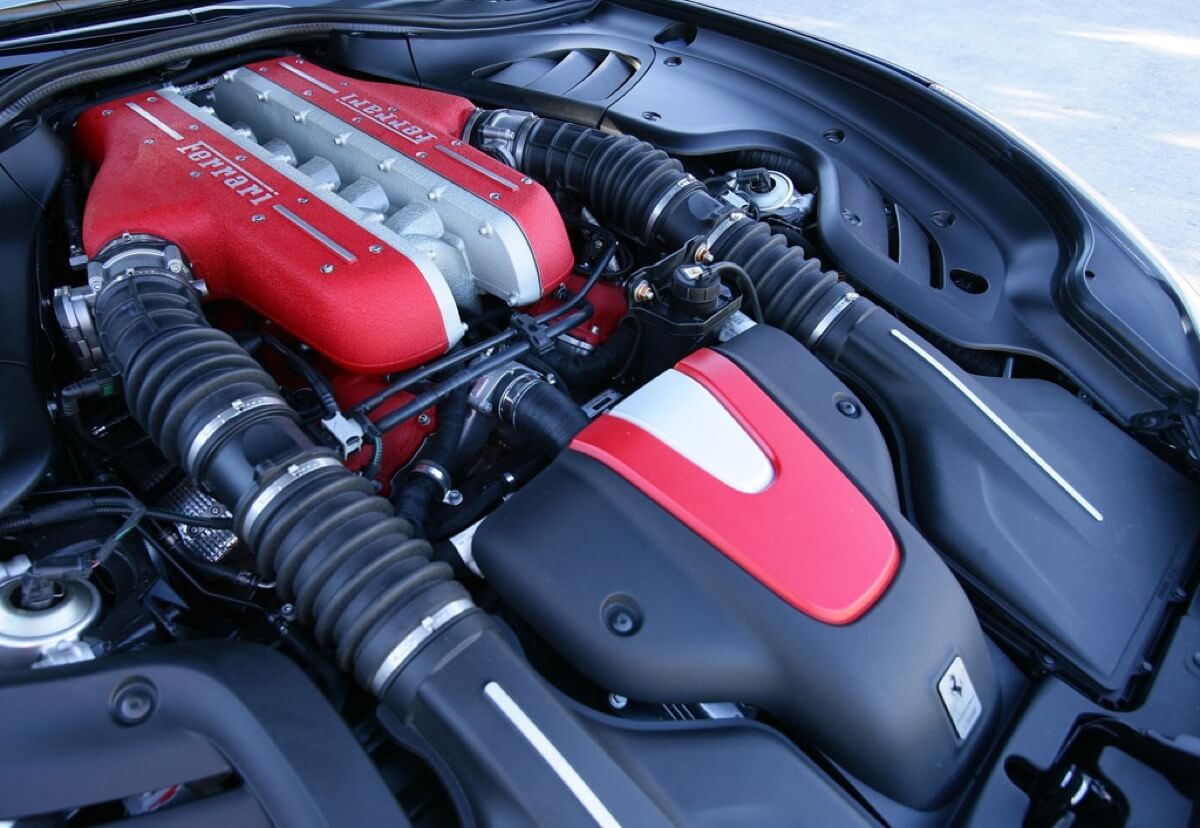
Speaking of the V12 engine, it’s worth noting engines like the one powering the FF are becoming rare. With the automotive world shifting towards smaller, more fuel-efficient engines and electric powertrains, the era of the naturally aspirated V12 is drawing to a close. This scarcity is likely to boost the FF’s appeal and potential as a future classic. As V12 Ferraris become more scarce, the FF stands out as a compelling candidate for collectors and enthusiasts looking for that unique blend of performance and versatility.
Buying an FF now means enjoying the prestige and thrill of the Prancing Horse, coupled with the benefits of a car that’s as suitable for daily errands as it is for spirited redline driving—all at a more accessible price point than ever before. Just make sure you get a unit that’s been properly taken care of by its previous owner, one that’s in mint condition and has complete service/repair records.
Last Words
The FF may not have enjoyed the same limelight as Ferrari’s more traditional supercars and grand tourers, but it was a bold step for the marque—proof of Ferrari’s ability to innovate and meet the evolving needs of its clientele. By offering a car that combined the thrill of a Ferrari drive with the practicality of a four-seater, the FF was an early forerunner in adapting to a market that increasingly values versatility alongside performance.
In fact, this car’s legacy can be seen in the development of the Purosangue SUV, Ferrari’s response to the booming demand for luxury SUVs. With the Purosangue currently being one of the most sought-after models in Ferrari’s range, boasting a waiting list that extends over years, it’s clear the FF played a pivotal role in paving the way for its success.
There’s no denying the FF is a fruit of Ferrari’s engineering genius, and given you could get one now by paying about a third of its original MSRP, it sure has become intriguing to own. After all, it’s a practical sports car with a V12 engine and a Ferrari badge — who could’ve blamed you for wanting one?


